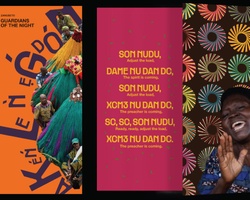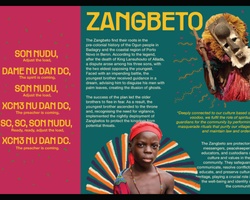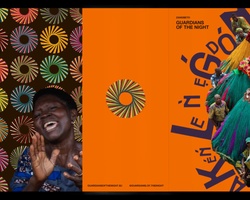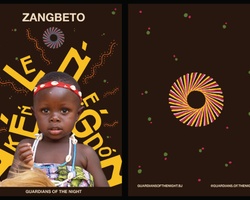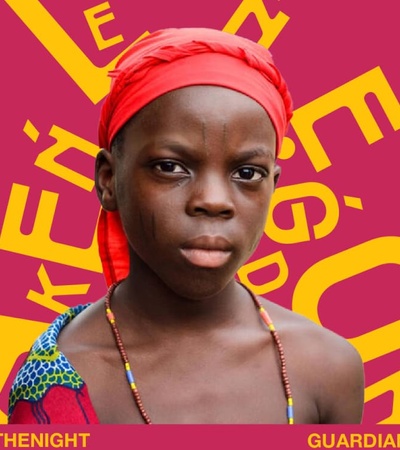
- Home
- Student Projects
- Akéń Le Ǹ Ẹgdón
AKÉŃ LE Ǹ ẸGDÓN
“Guardians of the Night” in gun language, AKÉŃ LE Ǹ ẸGDÓN is a brand identity exploration rooted in the spiritual and cultural significance of Zangbetos, mystical guardians from the Ogu people of Nigeria, Benin, Ghana and Togo. Deeply connected to their ethnic tribal culture and the voodoo religion, Zangbetos fulfil the role of spiritual guardians for their communities by performing masquerade rituals that purify their villages, while also maintaining law and order through non-violent symbolic actions, and preserving ancestral traditions.
The Zangbetos' origins date back to the 17th century when they were first summoned by the youngest son of a king in Badagry, who used these spectral apparitions to claim victory and secure his rule. Today, the Guardians of the Night comprise a secret society exclusively accessible to Zangbeto or voodoo devotees, acting as guardians of their communities. One of their most important events for the protection of the community as well as, nowadays, the attraction of tourists, is the masquerade ritual. During this ceremony, a spiritually charged atmosphere envelops the community. The vibrant costumes meticulously crafted with raffia and palm leaves and skillfully dyed in vibrant and varied hues come to life amidst lively drumming and dancing, creating a dynamic and engaging spectacle and infusing a sense of vitality and spirituality. The spinning motion of the mask represents all Zangbeto’s qualities, becoming a symbolic expression of strength, cleansing and protection, key elements that make up the core of this visual system.
Inspired by these symbolically and aesthetically rich qualities, the visual language designed for this project captures the essence of these enigmatic figures and their relevance to the community and culture. With the relationship between Zangbeto and the community at its core, the visual system is based on representing the protection given by the guardians that surrounds their communities, represented through the use of typography and colour. This visual identity reflects Zangbeto’s multifaceted nature, intertwining spirituality, cultural preservation and communal safety to create a visual narrative that honours their traditions while adapting them to a modern design context.
